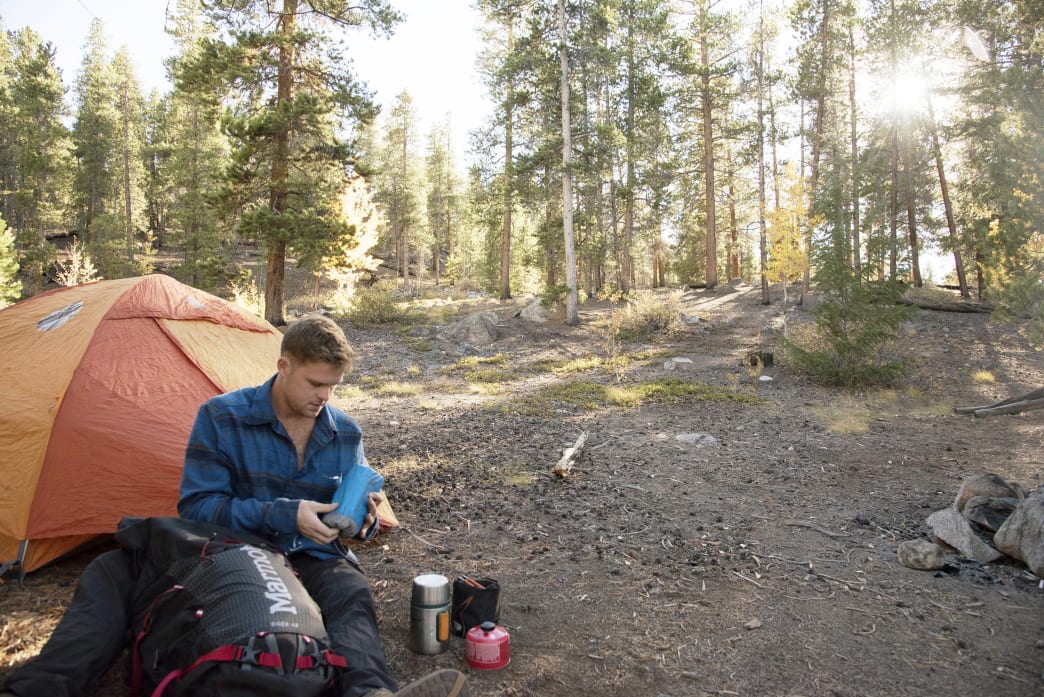Most Recent

Food tastes better in the outdoors… we’re pretty sure it’s science. But no matter how delicious your favorite freeze-dried meal is, or how much you swear by tortillas and peanut butter, trying something new never hurts. It’s easy to enhance backcountry meals without much extra effort. Whether you’re car camping, out for a backcountry weekend, […]
Intro The 486-mile Colorado Trail starts at Waterton Canyon on the outskirts of Denver and goes west into the heart of the Rocky Mountains, ending in the town Durango. As Colorado’s premiere thru-hike, it offers a wealth of fantastic backcountry camping for both backpackers and those looking for a quick weekend escape. A majority of […]
Intro Eldorado Canyon features over five hundred routes with trad, sport, and top rope routes. Known for its gold and red cliffs, this place is a trad climber’s haven. It’s only 7 miles from Boulder, which makes it very accessible. And there are a lifetime’s worth of climbs. Bastille Crack (5.7+) is one particularly classic […]
Boulder is a training ground for countless world-class athletes, and it’s not hard to see why. The city is at the foot of the famous Flatirons, and is just a stone’s throw from iconic locations like Eldo, Boulder Canyon, and Lumpy Ridge, among others. As the days get colder and snowier, though, Boulder climbers will […]
With the storm clouds from the day’s rain still lingering, the setting sun ignited the sky in intense golden light and vibrant hues of pink. Maneuvering my rusty Sprinter van through curve after curve, descending deeper into the canyon that leads to Zion National Park, I felt like nothing could stop the good vibes that […]
"Are you crazy?" my friend exclaimed. “He’ll never want to travel again!” I simply smiled. We were catching up and discussing my upcoming travel plans, which involved a multi-day jungle trek with my city-slicker brother in tow. I’m a well-seasoned travel vet, with more than 35 countries on my passport. On the contrary, my younger […]
To many, Denver is the true gateway to the West. Sure, St. Louis may have an arch, but it also has 850-miles of Midwestern plains to contend with before the real West begins. And like so many early frontiersmen, who reached the western edge of the High Plains—where modern-day Denver is located—and gazed upon the […]
Intro No trip to Aspen would be complete without visiting the Maroon Bells. Don’t let the crowds deter or the fact that you have to take a bus from Aspen Highlands Village mid-June through Labor Day (and on the weekends throughout September) you, the views and photo opportunities are beyond worth the effort. The easiest […]

Asa Firestone was born with an entrepreneurial spirit and has cultivated hospitality expertise in the picturesque landscapes of Lyons and Boulder, Colorado. As the co-owner of the A Lodge, his journey epitomizes dedication, innovation, and a deep-rooted commitment to community.
Asa’s journey began with a profound appreciation for travel and exploration. His early experiences staying in lodges around the world ignited a passion for creating memorable experiences for others. Armed with this passion and a keen business acumen, he embarked on a mission to redefine hospitality in his own backyard.
In 2008, Asa’s vision came to fruition with the establishment of the A Lodge in Boulder, Colorado. Nestled amidst the majestic Rocky Mountains, this Boulder hotel quickly garnered acclaim for its blend of rustic charm and modern comfort. Under Asa’s guidance, the A Lodge became more than just a place to stay; it became a destination where guests could immerse themselves in the unparalleled beauty of Colorado while experiencing genuine hospitality.
However, Asa’s ambitions didn’t stop there. Recognizing the growing demand for unique accommodations in Boulder, he expanded his footprint by acquiring and revitalizing a second property in the heart of Lyons. This expansion not only solidified Asa’s reputation as a visionary entrepreneur but also furthered his mission of providing exceptional hospitality experiences to a broader audience.
Beyond his role as a hospitality magnate, Asa Firestone is deeply invested in the communities he serves. Whether through supporting local initiatives, fostering sustainable practices, or championing the arts, he remains dedicated to making a positive impact at both the local and global levels.
Asa’s leadership exemplifies a harmonious blend of passion, innovation, and compassion. His unwavering commitment to excellence continues to set the standard for hospitality in Lyons, Boulder, and beyond. As guests continue to flock to the A Lodge, they are not only welcomed into a warm and inviting space but also into the visionary world of Asa Firestone.
